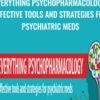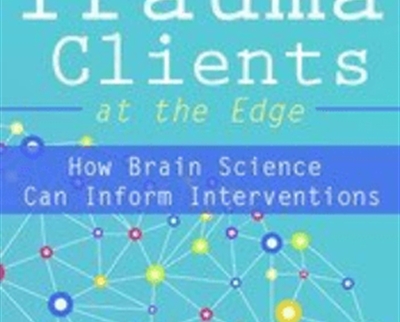$59.99 Original price was: $59.99.$25.00Current price is: $25.00.
2 Hours 06 Minutes
Watch Frank Anderson, colleague of Dr. Bessel van der Kolk and Dr. Richard Schwartz, as he provides an essential road map for treating relational trauma cases. Explore the neurobiological processes of hyperarousal and parasympathetic withdrawal and the underlying symptoms.
 Purchase this course you will earn 25 Points worth of $2.50
Purchase this course you will earn 25 Points worth of $2.50We often get shaken and lose confidence in our approach when a client’s trauma response edges into seemingly uncontrollable dynamics of rage, panic, or suicidal desperation.
Watch Frank Anderson, colleague of Dr. Bessel van der Kolk and Dr. Richard Schwartz, as he provides an essential road map for treating relational trauma cases. Explore the neurobiological processes of hyperarousal and parasympathetic withdrawal and the underlying symptoms.
Watch now and you will also learn various therapeutic techniques and interventions that can be integrated with psychotherapy practices to help soothe your clients’ trauma
- Evaluate the extreme symptoms of trauma by determining if they are rooted in sympathetic activation or parasympathetic withdrawal to inform clinical treatment interventions.
- Articulate methods by which neuroscience can be interfaced with psychotherapy practices to improve clinical outcomes.
Experiential Treatments – Integrating neuroscience and psychotherapy
- Necessity of utilizing physical, emotional and relationship aspects in therapeutic intervention
Problems with traditional phase oriented treatment
- Negative evaluation of symptoms – ignoring their protective function
Internal Family Systems
- Understanding symptom presentation as positive efforts pushed to extremes
- Welcoming and integrating all parts of an individual
- Identifying intent of symptomology, importance of avoiding shaming
Redefining trauma related diagnoses and integrating overactive protective mechanisms
- Disorganized attachment
- Borderline Personality Disorder, Dissociative Identity Disorder
Therapist factors – vulnerabilities
- Impact of therapist parts acting as separately as the clients we work with
- Responding effectively to personal triggers
Symptoms of post trauma
- Hyperarousal, hyperarousal, psychic wounds
- Importance of obtaining permission before addressing psychic wounds
Experiential exercise – self-awareness, response to triggers
Mind-brain relationships
- Neuroplasticity, neural integration
- Neural networks associated with trauma
- Implicit nature of trauma memories
Autonomic nervous system
- Role of cortisol
- Sympathetic hyper-arousal
- Characteristics of extreme symptom activation and mixed states
Therapeutic responses
- Choosing compassion or empathic responses
- Providing auxiliary cognition
- Strategies to avoid contributing to hyperarousal
- Top down strategies to separate or unblend
Case presentation – example of permission seeking, direct access and unblending
Polyvagal Theory
- Dorsal and ventral branches
- Activating strategies, responding to hypo-arousal, blunting
Get Treating Complex Trauma Clients at the Edge: How Brain Science Can Inform Interventions of author Frank Anderson only price 29$
Tag: Treating Complex Trauma Clients at the Edge: How Brain Science Can Inform Interventions – Frank Anderson Review. Treating Complex Trauma Clients at the Edge: How Brain Science Can Inform Interventions – Frank Anderson download. Treating Complex Trauma Clients at the Edge: How Brain Science Can Inform Interventions – Frank Anderson discount.
Only logged in customers who have purchased this product may leave a review.
Related products
= 85 Points
Uncategorized
= 35 Points
Uncategorized
Proven Fall Prevention Strategies: Exercise, Meds Management and Home Modification – Trent Brown
= 40 Points
Uncategorized
Cognitive Rehabilitation Therapy: Practical Interventions and Personalized Planning – Jane Yakel
= 85 Points
Uncategorized
Managing Patient Emergencies: Critical Care Skills Every Nurse Must Know – Dr. Paul Langlois
= 85 Points
= 85 Points
= 94 Points
Uncategorized
= 85 Points





Reviews
There are no reviews yet.